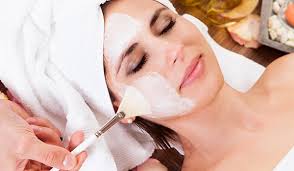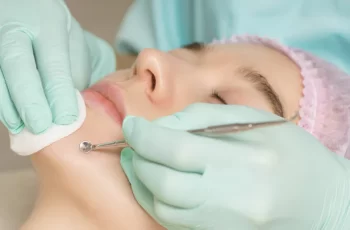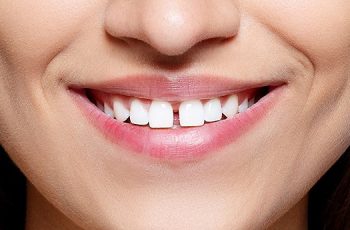
Facial Tips: 10 Things You Should Absolutely Do After Your Facial
When you emerge from the spa after a rejuvenating facial, you may feel like you have new skin. After an hour of pampering, your skin will look refreshed and radiant. But as the scent of essential oils and the soothing atmosphere of the spa fade into memory, your job at home begins: post-treatment care to prolong your new glow.
Read on to learn some expert tips for 10 facials to ensure your new glow is long-lasting and suitable for daily use. Whether you’re a seasoned spa goer or considering your first facial, here’s how to make the most of the experience.
What is the purpose of a facial?
There are many different types of facials, but the overall goal is to promote and maintain healthy, radiant, and rejuvenated skin. This includes exfoliation, extractions, moisturizing, and more. Treatments should be tailored to your specific skin care needs, whether you suffer from acne, dull skin, signs of aging, or other issues. Here are some of the main components of a standard facial:
Deep cleansing: A facial begins by thoroughly cleansing the skin to remove dirt and makeup. This step helps open the pores and prepare the skin for subsequent treatments.
Exfoliation: A gentle exfoliation process removes dead skin cells from the surface. This not only improves skin texture but also aids in the absorption of skincare products.
Extractions: If necessary, the esthetician can perform extractions to remove blackheads or whiteheads. This step helps prevent breakouts and improve the overall appearance of the skin.
Moisturizing: Different facials may include masks, serums, or lotions with specific ingredients for individual skin types and concerns. These products provide moisture, antioxidants, and important nutrients to the skin.
Facial massage: Facial massage is not only relaxing but also helps reduce stress. It also helps improve blood circulation and lymphatic drainage.
Skin analysis: A skin care professional can assess a client’s skin during a facial and provide customized recommendations for at-home skin care routines and products.
Anti-aging benefits: Some facials focus on reducing signs of aging, such as fine lines and wrinkles, through specialized treatments such as collagen masks or lasers.
When should you treat yourself?
Facials are suitable for all skin types at any time of day. However, you may want to schedule them for the late afternoon to allow serums to penetrate your skin overnight. If your skin is oily or sensitive, be sure to ask your esthetician to use ingredients that are suitable for your skin type.
While there are no hard and fast rules for how often you should get a facial, most experts agree that once a month is enough for a standard facial. If you opt for more complex treatments such as microdermabrasion, chemical peels, etc., you should consult an esthetician or dermatologist based on your skin type.
Hyaluronic Acid Lotion
Hyaluronic Acid Lotion
• Locks in moisture and moisturizes
• Helps protect, repair, and heal the skin
• Anti-inflammatory ingredients
Regular price $45
Add to cart
10 Top Tips for Post-Facial
To prolong the effects of your facial and maintain your post-treatment glow, follow these 10 facial tips.
1. Cleanse and Moisturize
After your facial, you should continue your skin care routine by cleansing your face twice a day with a gentle cleanser. Follow with a moisturizer appropriate for your skin type. This will help maintain the results of the facial and keep your skin hydrated. For extra hydration, we recommend using products containing hyaluronic acid, a natural humectant that attracts and locks in moisture to the skin, boosting moisture levels and enhancing the skin’s ability to retain moisture.
Foundation Skincare Hyaluronic Acid Lotion improves the skin barrier while moisturizing. It also contains additional anti-inflammatory ingredients like shea butter and chamomile extract to minimize redness or irritation. Plus, this product pairs well with other skincare products, like Foundation Skincare’s Vitamin C Lotion, which provides anti-aging properties and protection from harmful UV rays.
2. Avoid Sun Exposure
Speaking of harmful UV rays, you should always protect your skin from the sun, especially after a facial. Avoid direct sunlight for a few days after your treatment. If you must go outside, make a habit of sun protection, like applying a broad-spectrum sunscreen with SPF 30 (preferably 50+) and wearing a wide-brimmed hat. If you already struggle with sun damage like hyperpigmentation or premature aging, try incorporating targeted products like niacinamide and azelaic acid into your routine. These products may be able to reverse the signs of sun damage.
Foundation Skincare Niacinamide Lotion 10% delivers a high concentration of active ingredients that are enough to fade dark spots and brighten your complexion by reducing melanin deposition and improving DNA repair. Niacinamide also boosts collagen and keratin production, which can reduce fine lines and wrinkles and tighten sagging skin.
Pair FS Niacinamide Lotion with Azelaic Acid 14% Foundation Cream, which has the highest percentage of OTC products on the market, but is gentle enough to be used on even the most sensitive skin. Not only does it enhance niacinamide’s ability to reduce premature signs of aging, it also minimizes hyperpigmentation by inhibiting tyrosinase. 1
3. Retain Moisture
While hyaluronic acid does a great job of retaining moisture on the outside of your skin, don’t forget to retain moisture on the inside, too. Moisture is important for maintaining your skin’s elasticity and radiance. It also helps your body flush out toxins and improves blood circulation, leading to clearer skin.
4. Avoid makeup (if possible)
If you can, go makeup-free and wear no makeup after a facial. This allows your skin to breathe and recover. After steaming and cleansing, your pores may still be open and fragile, so makeup could cause irritation, clogging, or future breakouts.
5. Avoid irritating products
In addition to avoiding makeup, you should also try to avoid irritating products that can irritate your skin. These include home exfoliants and salicylic acid cleansers or toners. You should also avoid masks that may contain acne-drying or skin-lightening ingredients. It is not uncommon for skin to be sensitive after a facial, and these types of products may cause redness and discomfort. Be sure to ask your esthetician for advice on what to avoid.
6. Gentle skin-care routine
Always follow a gentle skin-care routine after a facial. In addition to a gentle, fragrance-free cleanser and moisturizer, be sure to use warm (not hot) water and pat your skin dry. When layering skincare products, be careful not to conflict with each other’s ingredients. Remember that all products in the foundation skincare line can be safely layered.
7. Limit physical activity
Physical activity is undoubtedly important for your overall health. But try not to overdo it after a facial. Vigorous exercise (and hot yoga!) can lead to excessive sweating, which can irritate your skin or clog your pores. Sweating can also remove any serums your aesthetician applied during your facial.
8. Protect your skin
We mentioned that you should use sunscreen to protect your skin from sun damage, but with so many options out there, do you know how to choose the right one? Follow these tips to make your decision easier:
Use a sunscreen with SPF 30+ (preferably 50+)
Choose a broad-spectrum sunscreen to protect against both UVA and UVB rays
Look for a hybrid sunscreen that contains both mineral and chemical compounds
When using sunscreen, always consider less visible areas like your neck and ears. Also, don’t forget to protect your lips with a lip balm or lip balm with SPF 30 or higher.
9. Avoid steam baths and saunas
Even if your facial has some steam in it, you should avoid direct heat on your skin afterwards, as this can cause swelling and redness on sensitive skin. Steam rooms and saunas can also make you sweat, which can lead to those clogged pores we mentioned earlier.
10. Follow-up Appointments and Treatments
Before you leave the spa, talk to your aesthetician about when to schedule your next facial. Getting regular facials can help keep your skin healthy, but an effective at-home routine can help, too. Whether you’re battling acne, premature aging, or hyperpigmentation, be sure to incorporate ingredients that target your specific concerns into your routine.
Benefits of Regular Facials
A monthly facial isn’t just good for your skin, it’s also good for your mental health. One study found that hour-long facials relaxed subjects’ brains, hearts, breathing, and muscles, and produced positive emotions. 2 These benefits are in addition to the obvious physical benefits for the skin:
Clearer skin
Fewer signs of aging
Peeling
More even skin tone
Free pores
More hydrated
Radiant complexion
Expert advice on skin care
Remember that everyone has unique skin. So it’s important to follow your aesthetician’s instructions for aftercare tailored to your specific needs. Proper aftercare will ensure that the effectiveness of your facial is maximized, resulting in healthier, brighter skin over time.


